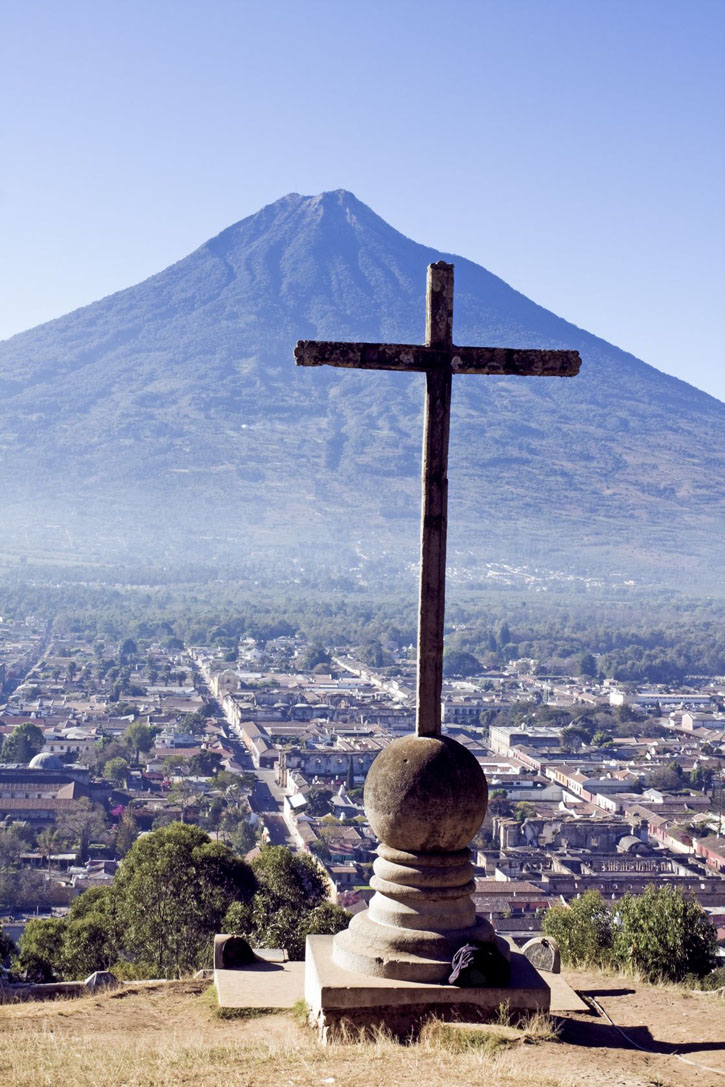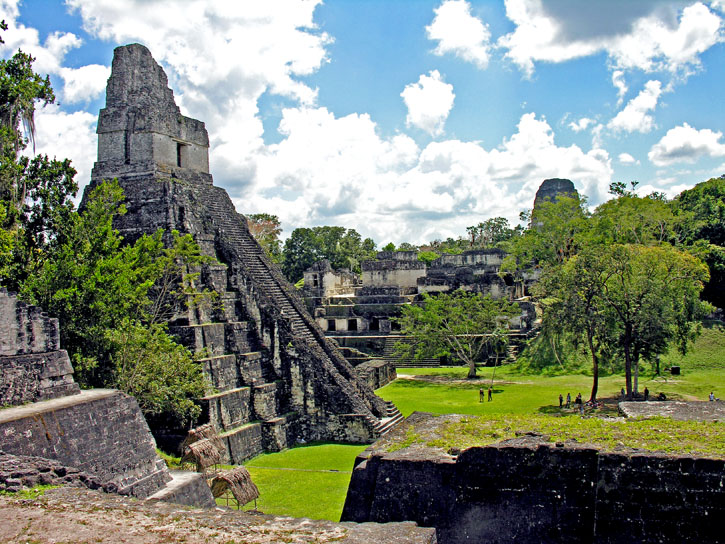Guatemala has always been the stuff of legend. Wherever you go, you will sense its magic. When you leave its cosmopolitan capital, Guatemala City, the green landscape unfolds before you—its misty mountains, pine forests, and agricultural fields look like something out of a fairytale. You might visit a highland market where Mayan crafts are sold, or climb an active volcano to witness a lava light show. In a fancy Antigua restaurant, you can dine beneath Spanish colonial arches set beside a gurgling fountain, as live music from modern dance clubs floats through the warm air.

Agua Volcano watches over Antigua, Guatemala’s old colonial capital. Photo © Henryk Sadura/123rf.
I love its majestic mountains, conical volcanoes, sweltering jungles full of half-excavated Mayan pyramids, black-sand beaches, and the sense of magic that permeates everyday life here.Despite the beauty of its landscape, the richness of its culture, and its diversity of flora and fauna, Guatemala is a country that remains the playground of a few fortunate souls. It’s not an easy place to navigate, no doubt. Like much of Latin America, the country still struggles with endemic poverty and inequality. Shantytowns sprawl in the shadows of luxury high-rise condos, while a citizen movement clamors for political reform.Whatever the outcome, I can tell you I’ve never loved my country more. I love its majestic mountains, conical volcanoes, sweltering jungles full of half-excavated Mayan pyramids, black-sand beaches, and the sense of magic that permeates everyday life here. Come see it for yourself: Discover the mysteries of this magical land.
Guatemala has two seasons—rainy and dry. The rainy season usually begins at the end of May; the summer months are characterized by short afternoon or early evening showers that clear up by nighttime. By September or October, however, the weather is often socked in for days. During these two months, many hotels offer discounts in hopes of filling their rooms. Some parts of the country, most prominently the Caribbean coast, are rainy throughout the year.
The dry season runs from November to early May. December through February are the coldest months, with cold fronts from the north bringing temperatures into the mid-60s for daytime highs in mountain areas such as Antigua, Quetzaltenango, and Guatemala City. Temps warm up dramatically in March and April. During this time, thick haze from heat, dust, and agricultural burning clouds the views of Guatemala’s stunning mountain scenery.
The high tourist season runs from December to Holy Week (usually in April) with a second high season between mid-June and early September. Language schools in Quetzaltenango and Antigua are full with college students during the summer; rates go up accordingly. School lets out in late October, with vacations taking place until January. Families with children take over many of the popular destinations.

Tikal is the most famous of Guatemala’s Mayan sites and boasts impressive temple pyramids. Photo © Dennis Jarvis, licensed Creative Commons Attribution Share-Alike.
If you have one weekend, spend your time in Antigua Guatemala. In a week, you can take in Antigua Guatemala along with Pacaya Volcano and Lake Atitlán or Tikal, whichever you prefer. In two weeks, add to all the above a visit to Quetzaltenango and Cobán, saving some time for the museums in Guatemala City. If Quetzaltenango is too chilly, head to the Pacific Coast instead. Three weeks will give you time to explore all of these areas at a more leisurely pace, as well as spending time in Río Dulce and Lívingston.
Excerpted from the Fifth Edition of Moon Guatemala.